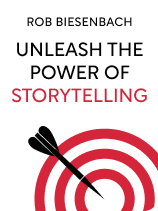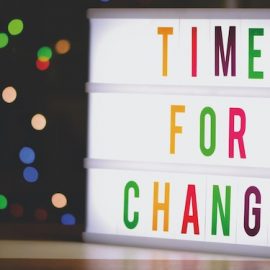

This article is an excerpt from the Shortform book guide to "Unleash the Power of Storytelling" by Rob Biesenbach. Shortform has the world's best summaries and analyses of books you should be reading.
Like this article? Sign up for a free trial here.
Do you want to engage and persuade your audience when you talk about your work, passions, or values? What if you crafted a story and then delivered it as a performance?
Even when you care deeply about your message, you don’t always connect with your listeners. Rob Biesenbach says that, if you take the time to get it right, you can tell a story that captivates listeners, affects their emotions, and persuades them to act.
Continue reading for several practical storytelling tips from a master of the craft.
Storytelling Tips
Creating the perfect story is one thing, but actually telling that story to an audience is another. Biesenbach believes that it’s not just the mechanics of the story but also your delivery of that story that makes it powerful. In fact, he considers the delivery of a story almost as important (though not quite) as its content. This makes sense to anyone who’s attended a meeting where someone presented dozens of slides without varying their tone of voice, which makes it difficult to engage with their message or remember any of it when the meeting ends.
Drawing on his experience as a speechwriter, strategist, and actor, Biesenbach shares several storytelling tips, explaining how you can optimize the delivery of your story to keep your audience engaged. Most importantly, he recommends treating storytelling as a performance. Perhaps the most important way to do that is to practice your story ahead of time.
(Shortform note: “Practice makes perfect” because of how our brains respond to rehearsal. Scientists have found that each time you practice a physical motion, your brain continues to build myelin, or insulation, around the neurons your brain uses to perform that task. That extra insulation enables electrical signals to travel more quickly, so you get faster at recalling what you’re supposed to do and putting that action into motion. Connecting gestures or movements to your story as you practice it, or even simply pacing around the room while you rehearse, can get multiple areas of your brain involved and improve your recall and performance.)
Telling a story like a performer also means staying present with your audience and staying connected to the details of the story. Make your voice, expressions, and gestures animated, and keep your storytelling dynamic by varying the words you emphasize, the volume of your voice, and the speed at which you speak. You can also use your body to tell your story: Match your facial expressions to the emotions in the story, use your hands to reinforce what’s happening in the story, and move your body to mark the passage of time.
(Shortform note: We’ve been honing our ability to deliver a story for tens of thousands of years. Researchers think that storytelling evolved as a method of sharing information, coordinating social behavior, and promoting cooperation. In fact, evolutionary psychologists think that storytelling gave our ancestors a survival advantage during the Ice Age. Though our earliest ancestors didn’t have written language, that doesn’t necessarily mean that they memorized their stories verbatim. In fact, experts today recommend against memorizing your whole story, which takes the spontaneity out of it. Storytelling organization The Moth advises memorizing just the first and last lines to stay more engaged in your telling of the story in between.)
Finally, making the most of the delivery involves choosing your language thoughtfully. Use sensory words to make your language more vivid and precise, use metaphors to make abstract concepts concrete, and use comparisons to impart a sense of scale with large numbers (for example, researchers reported that an iceberg “twice the size of Manhattan” separated from Antarctica, which for most of us is easier to visualize than a “600-square-mile iceberg”).
(Shortform note: More isn’t always more when you’re adding description or detail to your story. In On Writing, Stephen King suggests that you should aim to provide enough description to help your audience understand the world of your story, but not so much detail that your listeners won’t engage their imaginations to fill in some of it themselves.)

———End of Preview———
Like what you just read? Read the rest of the world's best book summary and analysis of Rob Biesenbach's "Unleash the Power of Storytelling" at Shortform.
Here's what you'll find in our full Unleash the Power of Storytelling summary:
- How telling a story can make any message more compelling
- The unique power stories have to influence us and shape our emotions
- The crucial pieces that make up a story (other than the beginning, middle, and end)






